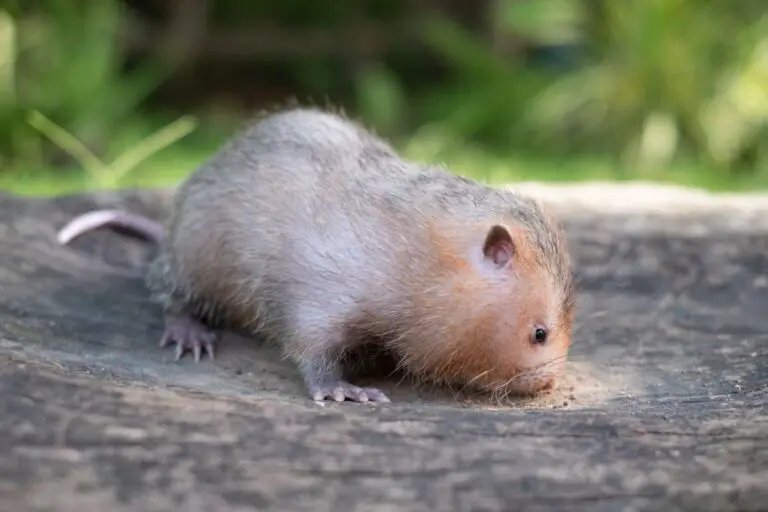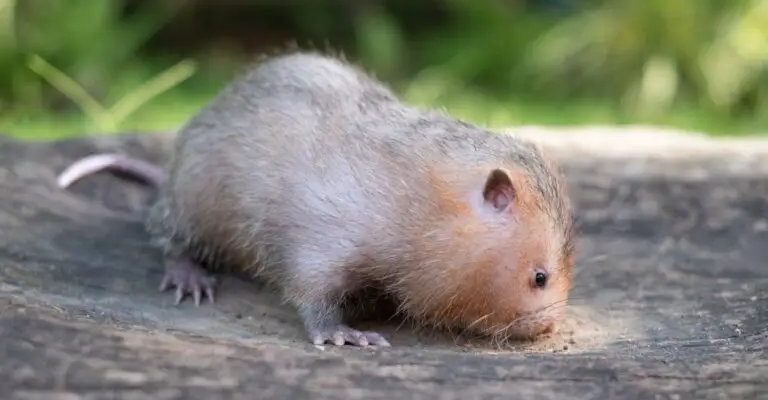
In this blog, we’ll explore ten animals that have traits in common with the naked mole rat, but each has its own distinctive features and adaptations. From their habitats to their behaviors, understanding these animals will not only satisfy your curiosity but also shed light on the incredible diversity of the animal kingdom. So, grab your favorite drink, and let’s dive in!
Naked Mole Rat: An Overview
Before we jump into looking at animals similar to the naked mole rat, let’s take a moment to appreciate what makes it so unique. Naked mole rats are small, burrowing rodents native to East Africa. These little creatures live in underground colonies, much like social insects. Their striking feature is their hairless skin, which helps them adapt to their subterranean lifestyle. Living in groups, they have a queen, much like bees, and other members of the colony take on different roles—some dig tunnels while others care for the young.
Here’s the thing: naked mole rats are also remarkable for their longevity. They can live for over 30 years, which is unusually long for a rodent. Plus, they exhibit a resistance to cancer, making them an interesting subject for scientific research. Understanding these traits is key when comparing them to other similar animals.
1. Hairless Guinea Pig
When it comes to animals that resemble the naked mole rat, the hairless guinea pig is a good contender. While they aren’t subterranean diggers, they share that naked appearance, albeit with a slightly less wrinkled look. These small pets are social and friendly, often forming bonds with their human caregivers, much like naked mole rats live in communities.
What sets them apart? Hairless guinea pigs have a rounder body shape and a more pronounced face compared to the elongated and wrinkled features of the naked mole rat. Plus, guinea pigs are herbivores, munching on a diet of hay and vegetables, while naked mole rats are more focused on underground plant tubers.
2. Damaraland Mole Rat
Next up is the Damaraland mole rat. Similar in many ways to the naked mole rat, this species also has a social structure and burrowing lifestyle. They live in colonies and have a queen who oversees reproduction. The Damaraland mole rat has a bit of fur on its body, which differentiates it from its hairless cousin.
You might wonder how to tell these two apart. One distinct feature is the size; Damaraland mole rats tend to be larger, and the slight fur covering means they have a different texture. Their habitats are also a bit different, often preferring slightly drier regions than the naked mole rat.
3. European Mole
The European mole is another fascinating creature worth mentioning. These small mammals are excellent diggers, spending most of their lives underground. Like naked mole rats, they have adapted to a life of burrowing, but they have a more traditional fur coat that keeps them insulated in cooler climates.
The European mole tends to have a stockier body and a broader head compared to the more elongated and sleek naked mole rat. They primarily feed on earthworms and insects, showcasing a different diet than the plant-eating naked mole rats.
4. Naked Bat
Let’s talk about the naked bat, which, despite its name, isn’t directly related to the naked mole rat. However, it shares that hairless quality. These bats have a unique appearance with their exposed skin and large ears. The naked bat is known for its ability to navigate and hunt in complete darkness, making it a master of echolocation.
What sets the naked bat apart is its dietary choices; these bats primarily feed on insects, unlike the herbivorous naked mole rat. Their habitats also differ, as naked bats are typically found in caves and roosts, while naked mole rats live in extensive underground tunnels.
5. Blind Cave Fish
Moving from mammals to fish, let’s consider the blind cave fish. These fascinating fish have adapted to life in dark caves, losing their eyesight in the process. Much like naked mole rats, they thrive in dark environments and have specialized adaptations for survival.
The key difference is in their environment—while naked mole rats dig through soil, blind cave fish swim through water. Their lack of eyes is a survival trait that allows them to focus more on their other senses, similar to how naked mole rats rely heavily on their sense of touch and smell.
6. Aardvark
The aardvark might not look like a naked mole rat at first glance, but they share some fascinating similarities. Both are nocturnal and have burrowing habits! Aardvarks are much larger and have long, powerful claws designed for digging. They primarily feed on ants and termites, which makes their diet different from that of a naked mole rat.
What’s interesting is their size; aardvarks can weigh around 100 pounds while a naked mole rat barely tips the scales at a few ounces! Their different habitats—aardvarks typically roam across the African savannah—further distinguish them from the underground lifestyle of the naked mole rat.
7. African Pouched Rat
Another intriguing animal is the African pouched rat. These clever creatures are known for their remarkable intelligence and ability to be trained for tasks, including detecting landmines. They share some physical similarities with naked mole rats, including their size and social nature, but they have fur and a more typical rat appearance.
What makes them unique is their adaptability and use in humanitarian efforts. Unlike naked mole rats, which primarily focus on their underground colonies, African pouched rats often roam across various terrains and are excellent climbers.
8. Earthworm
It may seem odd to include an earthworm, but hear me out. Both naked mole rats and earthworms play vital roles in their ecosystems, particularly in soil health. Naked mole rats create tunnels that aerate the soil, while earthworms enrich it through their burrowing and excreting.
The key difference lies in their biology. Earthworms don’t have a backbone and are invertebrates, while naked mole rats are mammals with complex social structures. Their roles in the soil make them similar in terms of helping the environment, though they belong to very different categories of animals.
9. Capybara
Last but not least, consider the capybara. While capybaras are much larger and have fur, they share some social characteristics with naked mole rats. They live in groups and have a communal lifestyle. Capybaras are semi-aquatic rodents found primarily in South America and are known for their friendly and social nature.
You can distinguish them by size and habitat—capybaras are typically larger and prefer wetland areas, whereas naked mole rats thrive underground. Their diets also differ; capybaras are herbivorous and often found grazing on grasses near water bodies.
So there you have it! Ten animals that share some characteristics with the naked mole rat, each with their own unique quirks and features. From the hairless guinea pig to the aardvark, these creatures illustrate the vast diversity of life on our planet. The naked mole rat stands out for its unusual traits and fascinating social structure, making it a true marvel of nature. Next time you find yourself pondering about the naked mole rat, remember these other interesting animals that share its quirky charm!

